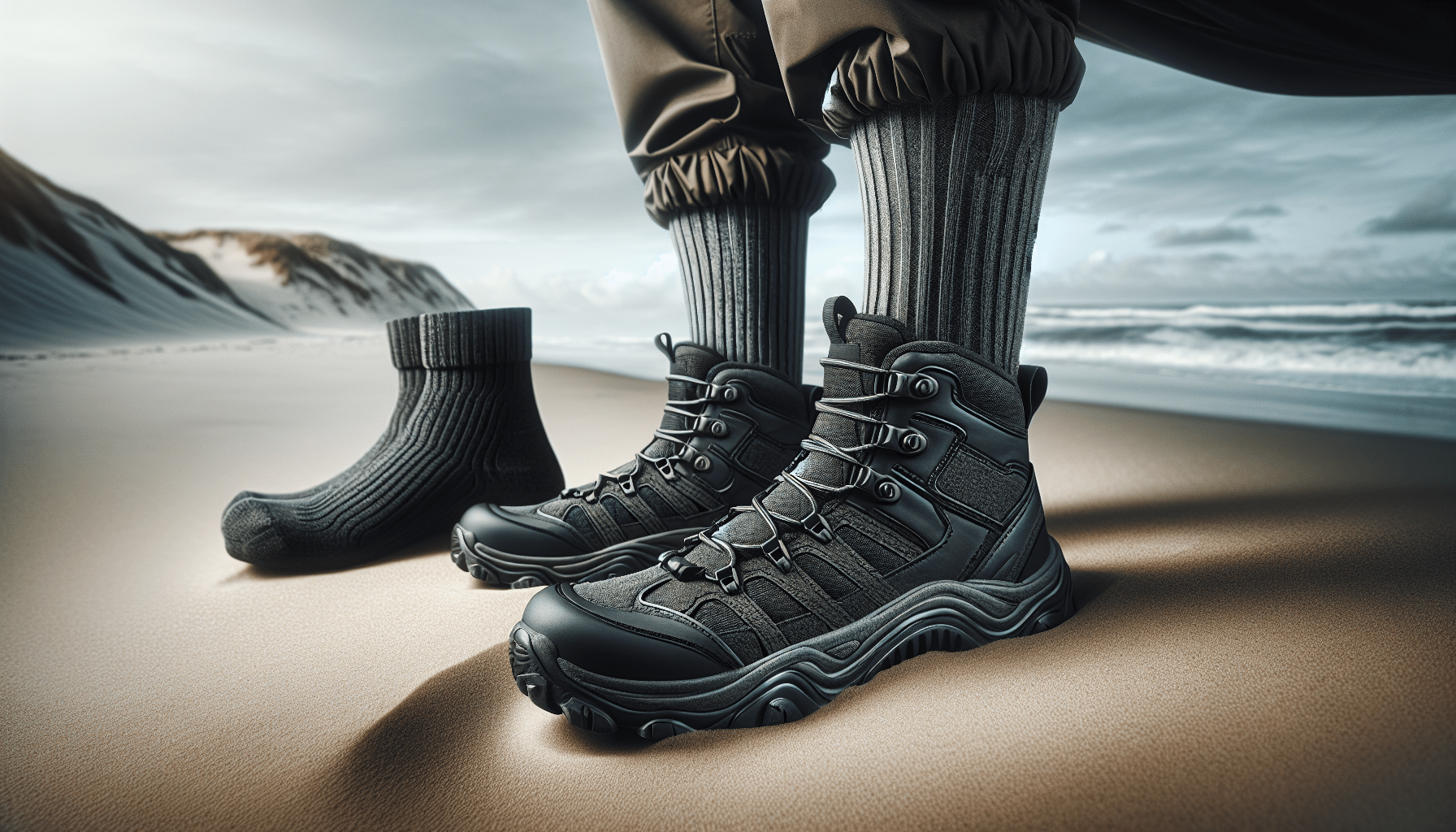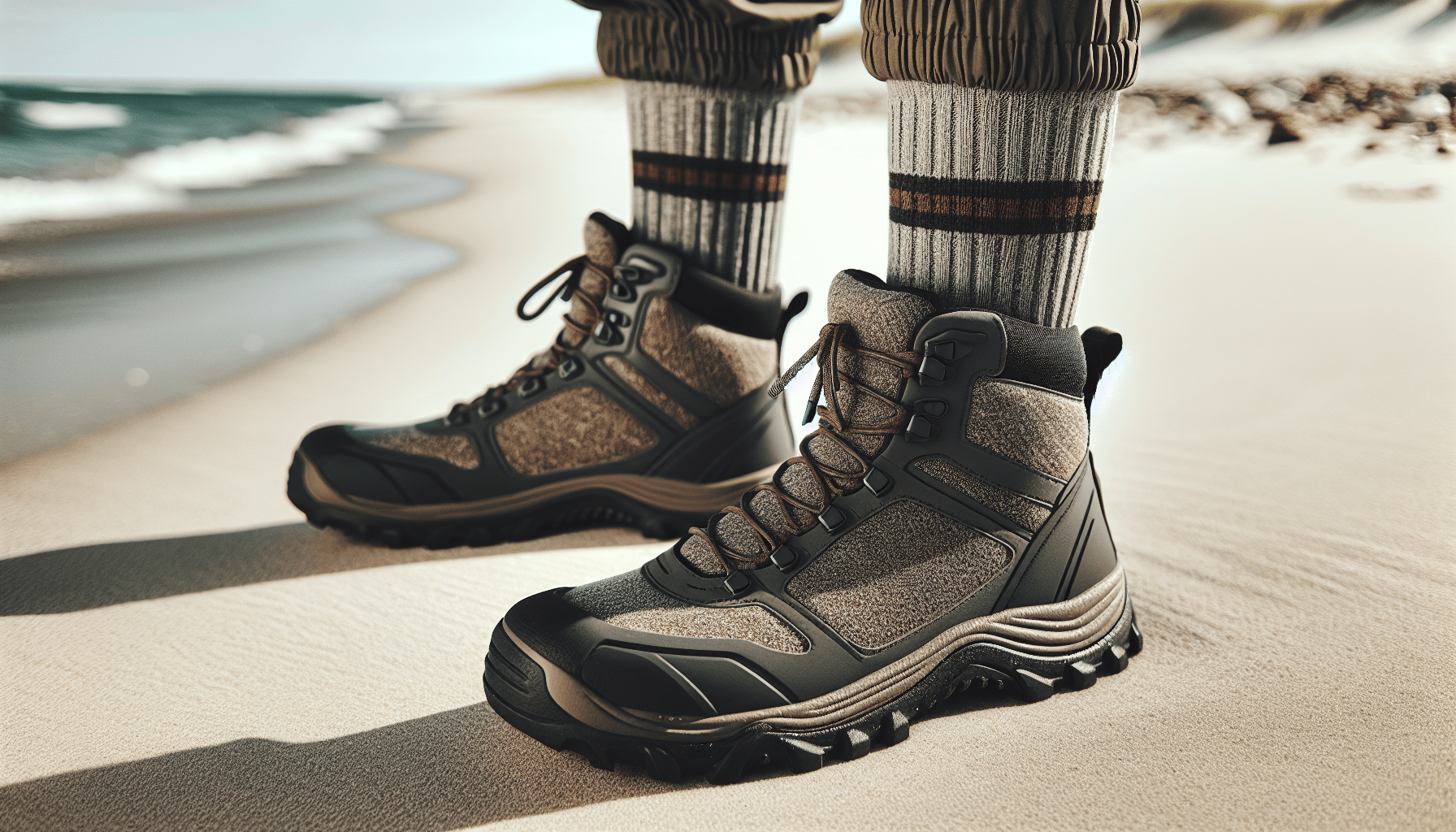Who File ISF For Water Booties & Socks
Have you ever wondered who is responsible for filing an Importer Security Filing (ISF) for water booties and socks? It’s essential to understand the requirements and procedures involved in filing an ISF for these types of products to ensure smooth customs clearance and compliance with regulations. In this article, we will explore the ins and outs of filing an ISF for water booties and socks, so you can navigate the process with ease.

What is an Importer Security Filing (ISF)?
Let’s start with the basics. An Importer Security Filing (ISF), also known as 10+2, is a U.S. Customs and Border Protection (CBP) regulation that requires importers or their authorized agents to submit specific information about cargo shipments before they are loaded onto vessels bound for the United States. This information must be submitted electronically through the Automated Broker Interface (ABI) or the Automated Commercial Environment (ACE) system.
Submitting an ISF is crucial for enhancing security measures and ensuring the smooth flow of goods through U.S. ports. Failure to file an ISF or submitting inaccurate information can result in penalties and delays in customs clearance.
Why is an ISF Required for Water Booties & Socks?
Now, you might be wondering why exactly an ISF is required for water booties and socks. These seemingly simple products fall under the category of clothing and footwear, which are subject to specific regulations and import requirements. The ISF provides CBP with essential information about the incoming cargo, such as the shipper, consignee, goods description, and other relevant details.
Filing an ISF for water booties and socks helps CBP identify high-risk shipments and prevent potential security threats. By ensuring that accurate information is provided in advance, CBP can conduct targeted inspections and screenings, thus enhancing the overall security of the supply chain.
Who is Responsible for Filing an ISF for Water Booties & Socks?
Now that we’ve covered the why let’s dive into the who. When it comes to filing an ISF for water booties and socks, the responsibility primarily falls on the importer of record. The importer of record is the party who is financially responsible for the imported goods and has the legal right to make decisions regarding the importation.
In some cases, the importer may choose to authorize a customs broker or freight forwarder to file the ISF on their behalf. This authorized agent acts as the intermediary between the importer and CBP, ensuring that all necessary information is accurately submitted within the required timeframe.
Key Parties Involved in Filing an ISF for Water Booties & Socks
To provide a clearer picture, let’s break down the key parties involved in the ISF filing process for water booties and socks:
| Party | Role |
|---|---|
| Importer of Record | Responsible for ensuring ISF is filed accurately and timely |
| Customs Broker | May be authorized by importer to file ISF on their behalf |
| Freight Forwarder | Another potential authorized agent for ISF filing |
Collaboration between these parties is essential to ensure that the ISF is submitted correctly and compliance requirements are met. By working together effectively, importers can avoid potential penalties and delays in customs clearance.

What Information is Required for Filing an ISF for Water Booties & Socks?
Now that we know who is responsible for filing an ISF, let’s dive into the specific information required for water booties and socks. When filing an ISF for these products, importers or their authorized agents must provide detailed information about the shipment to CBP.
Essential Information for ISF Filing
Some of the key information required for filing an ISF for water booties and socks includes:
- Shipper’s name and address
- Manufacturer’s name and address
- Consignee’s name and address
- Country of origin
- HTS (Harmonized Tariff Schedule) code
- Description of goods
- Container stuffing location
- Consolidator name and address
- Vessel name and voyage number
- Bill of lading number
Ensuring that all required information is accurately reported is crucial for a successful ISF filing. Any discrepancies or errors in the information provided can lead to penalties and delays in customs clearance.
When Should an ISF be Filed for Water Booties & Socks?
Timing is crucial when it comes to filing an ISF for water booties and socks. The ISF must be submitted to CBP at least 24 hours before the cargo is loaded onto the vessel bound for the United States. Failure to adhere to this timeframe can result in penalties and delays in customs clearance.
In addition to the initial ISF filing, importers or their authorized agents must also ensure that any updates or changes to the information provided are reported to CBP promptly. Keeping CBP informed of any modifications to the shipment details helps prevent discrepancies and ensures compliance with regulations.
Timeline for ISF Filing
To give you a clearer idea, here’s a general timeline for ISF filing for water booties and socks:
- Obtain necessary shipment details
- Submit ISF at least 24 hours before vessel departure
- Notify CBP of any updates or changes promptly
By following this timeline and staying on top of ISF filing requirements, importers can avoid unnecessary penalties and delays in customs clearance.
How to Avoid Common Mistakes When Filing an ISF for Water Booties & Socks
Filing an ISF for water booties and socks may seem straightforward, but there are common mistakes that importers should be aware of to ensure a smooth filing process. Here are some tips to help you avoid these pitfalls:
Double-check all information: Before submitting the ISF, review all the information provided to ensure accuracy and completeness. Any errors or missing details can lead to penalties and delays in customs clearance.
Stay informed about regulatory changes: Customs regulations are constantly evolving, so it’s essential to stay up-to-date on any changes that may impact ISF filing requirements for water booties and socks. This can help you avoid compliance issues and penalties.
Work with experienced professionals: If you’re unsure about the ISF filing process or have limited experience with importing goods, consider working with a customs broker or freight forwarder who has expertise in handling ISF submissions. Their knowledge and guidance can help you navigate the process successfully.
By being proactive and attentive to detail, importers can avoid common mistakes and ensure a smooth ISF filing process for water booties and socks.
Conclusion
In conclusion, filing an ISF for water booties and socks is a crucial step in ensuring compliance with customs regulations and facilitating smooth customs clearance. By understanding the requirements, key parties involved, information needed, and best practices for ISF filing, importers can navigate the process successfully and avoid potential penalties and delays.
Remember, timely and accurate ISF filing is key to a seamless importation process, so it’s essential to stay informed, collaborate with experienced professionals, and follow the guidelines outlined by CBP. By following these steps, you can ensure a hassle-free importation of water booties and socks and maintain a compliant supply chain.
